Bolt Action: Weitere Resin Waffenteams
Für zwei weitere Fration können Resin Versionen ihrer Waffenteams vorbestellt werden.
Hungarian Army weapons teams – 18,00€
Infantry weapons teams are a key component of any Bolt Action army, providing as they do great tactical flexibility for your force. Anti-tank teams and flamethrower teams are among the most prevalent, presenting your opponent with multiple challenges to overcome.
The Panzerschreck was one of many man-portable anti-tank weapons developed to combat the increasingly thick armour of tanks. The Panzerschreck’s 88mm shaped-charge rocket could penetrate all but the heaviest Soviet tanks, and was increasingly available in the Hungarian Army as the war dragged on.
The Solothurn anti-tank rifle was a cross between a true anti-tank rifle and a light anti-tank gun. Featuring a light wheeled carriage and a magazine-feed, the Soloturn could achieve a rate of fire of up to 20 rounds per minute.
Flamethrowers – Flammenwerfer – were used through the war and were often employed against buildings or fortifications, they could even be deployed in an anti-tank role in desperate circumstances. Such weapons were used by most nations throughout the war, with the Hungarian Army being no exception.
Contains the following Warlord Resin Plus™ figures:
- 2-man Panzerschreck team
- 2-man Anti-tank Rifle team
- 2-man Flamethrower team
These figures are cast in our new and improved Warlord Resin Plus™. For more information on this material click here
Soviet Army weapons teams – 18,00€
Infantry weapons teams are a key component of any Bolt Action army, providing as they do great tactical flexibility for your force. Sniper teams, mortar teams and flamethrower teams are among the most prevalent, presenting your opponent with multiple challenges to overcome.
The sniper became synonymous with the Red Army, particularly during the grim sieges of Stalingrad and Leningrad. ‘Sniper schools’ were established in bombed-out buildings and cellars, where successful snipers passed down their skills to ever-growing numbers of students – many of them women. Soviet propaganda lavished attention on successful snipers and encouraged a doctrine of ‘sniperism’ among the troops. Snipers used telescopic sights on either a bolt action Moisin-Nagant 1891/30, or, more rarely, a Tokarev SVT-40 smi-automatic rifle. A variety of ammunition was used, including tracer and armour-piercing rounds. Soviet snipers were available at company level working as teams or sometimes on their own. Individual Red Army squads would often have a designated marksman with a scoped rifle to help compensate for the lack of long-range firepower due to the large numbers of submachine guns in use. Soviet snipers became renowned for their fieldcraft, stealth and patience. The most successful snipers each accounted for hundreds of the enemy – around 500 being the greatest tally recorded by a single sniper.
The standard light mortar used by Russian infantry during World War II was the 50mm Infantry Mortar Model 1940 (50-PM 40), a cheaper version of the earlier model 1938, In addition, the Soviet army received considerable numbers of 2-inch mortars from Britain via Lend-Lease. The 50mm was deemed a ‘company’ mortar as opposed to the heavier 82mm battalion and 120mm regimental mortars. The allocation of 50mm mortars was initially to individual teams at platoon level, but later they were more often concentrated together at company level for use en masse. The weapon was easily man-portable and could lay down a high explosive or smoke bombs at a range of over 800 yards.
The Soviets made great use of flamethrowers including FOG-1 static types dug in to cover bunkers and trenches. Due to shortcomings in developing other credible anti-tank weapons, Red Army doctrine placed strong emphasis on using flamethrowers as anti-tank as well as anti-infantry weapons. They even formed separate motorised anti-tank flamethrower battalions in 1943. By far the most common Russian flamethrowers were the man-packed ROKS types. The ROKS-2 was designed with a fuel tank that looked like an ordinary backpack and a nozzle resembling a rifle, so as not to attract unwelcome attention on the battlefield.
Contains the following Warlord Resin Plus™ figures:
- 2-man Sniper team
- 2-man Light Mortar team
- 2-man Flamethrower team
These figures are cast in our new and improved Warlord Resin Plus™. For more information on this material click here
Produkte von Warlord Games sind unter anderem bei unseren Partnern Fantasy-In und Minyarts erhältlich.
Quelle: Warlord Games


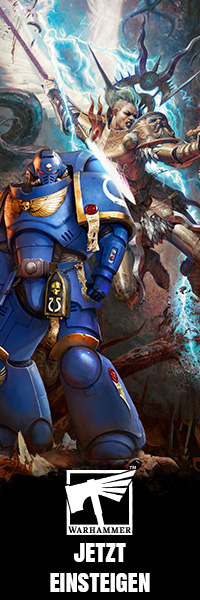
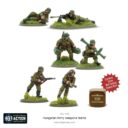
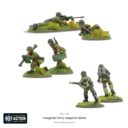
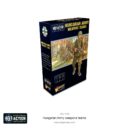
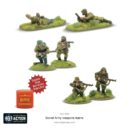
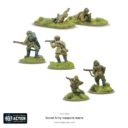
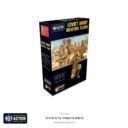


Kommentare